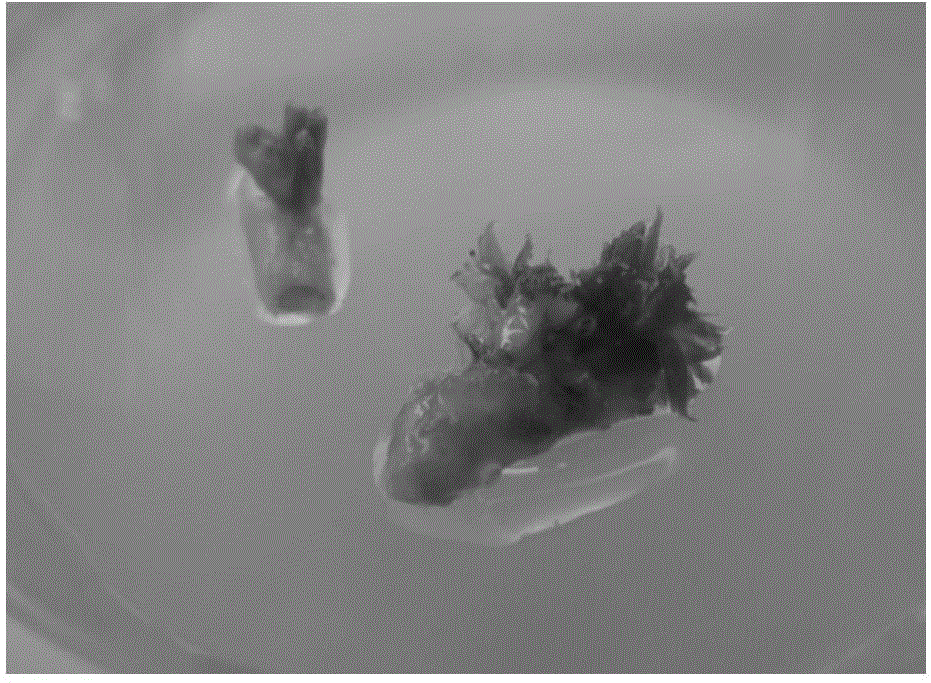Method for obtaining regeneration plants by use of camellia oleifera hypocotyl
A technology for regenerating plants and hypocotyls, applied in botany equipment and methods, plant regeneration, horticultural methods, etc., can solve problems such as failure to apply, no explants found for Camellia oleifera transgene, and inability to transgene plants
- Summary
- Abstract
- Description
- Claims
- Application Information
AI Technical Summary
Problems solved by technology
Method used
Image
Examples
Embodiment 1
[0037] Do the following in sequence:
[0038] 1. Select mature seeds of Camellia oleifera that year, remove the seed coats, rinse the seeds with tap water for 3-5 minutes, then soak them for 10-15 hours, change the water 2-3 times in the middle, and then use 75% of them in an ultra-clean workbench. Soak in alcohol for 20-30s, rinse with sterile water for 3-5 times, then use 0.1% HgCl 2 Sterilize for 3-5 minutes, rinse with sterile water 5-6 times, cut off most of the endosperm, inoculate the embryos with endosperm in WPM basic medium, cultivate in the dark for 2-3 days, then transfer to light for 20- Sterile seedlings can be obtained in 25 days; the culture temperature is 26±1℃, the light intensity is 2100-2200lx, and the light time is 12-14h / d.
[0039] Table 1 The effect of different disinfection treatment methods on the disinfection effect of Camellia oleifera seed embryos
[0040]
[0041] 2. Select the hypocotyl of the aseptic seedling of Camellia oleifera, cut the shaft sectio...
PUM
 Login to View More
Login to View More Abstract
Description
Claims
Application Information
 Login to View More
Login to View More - R&D
- Intellectual Property
- Life Sciences
- Materials
- Tech Scout
- Unparalleled Data Quality
- Higher Quality Content
- 60% Fewer Hallucinations
Browse by: Latest US Patents, China's latest patents, Technical Efficacy Thesaurus, Application Domain, Technology Topic, Popular Technical Reports.
© 2025 PatSnap. All rights reserved.Legal|Privacy policy|Modern Slavery Act Transparency Statement|Sitemap|About US| Contact US: help@patsnap.com



